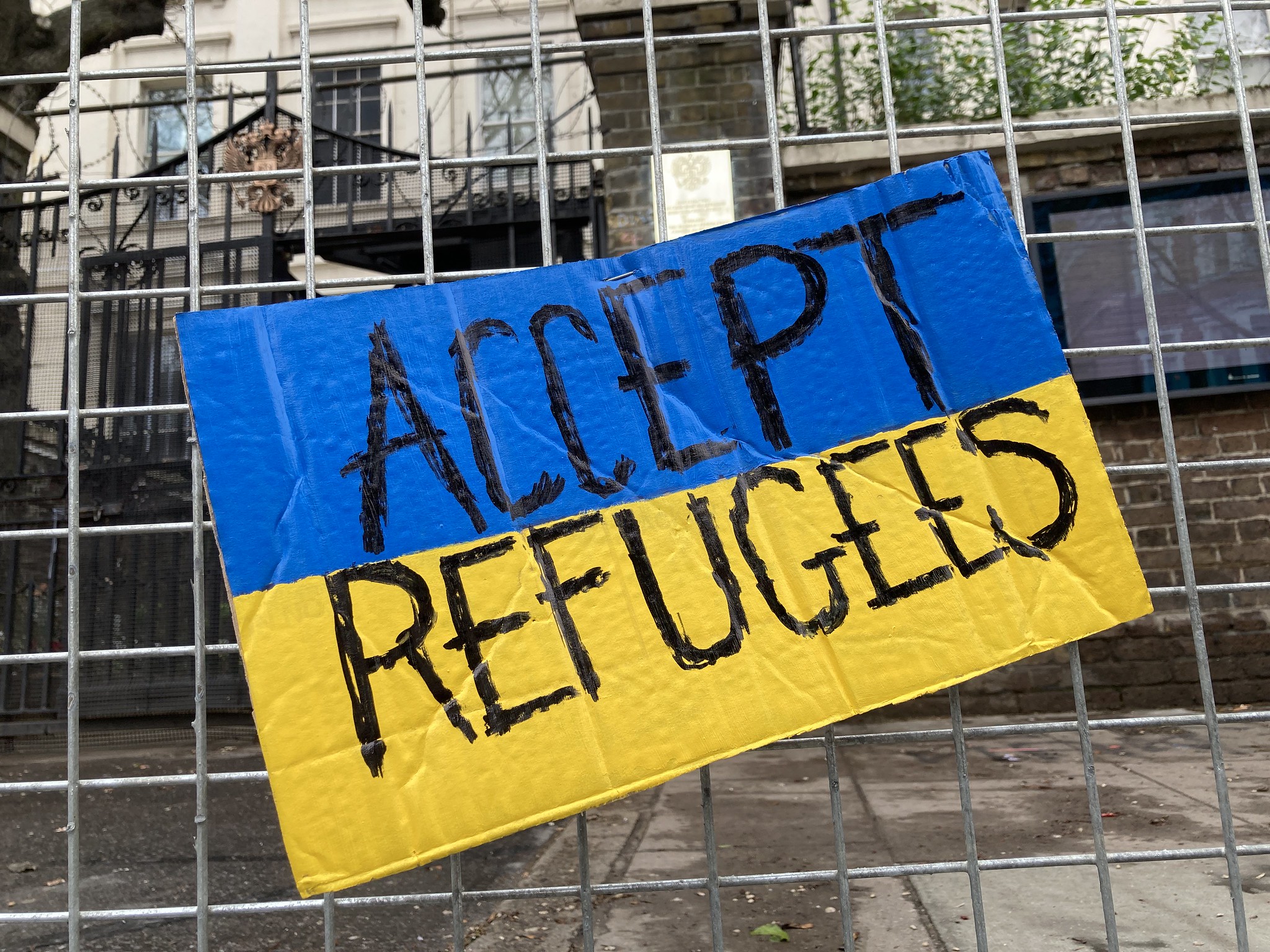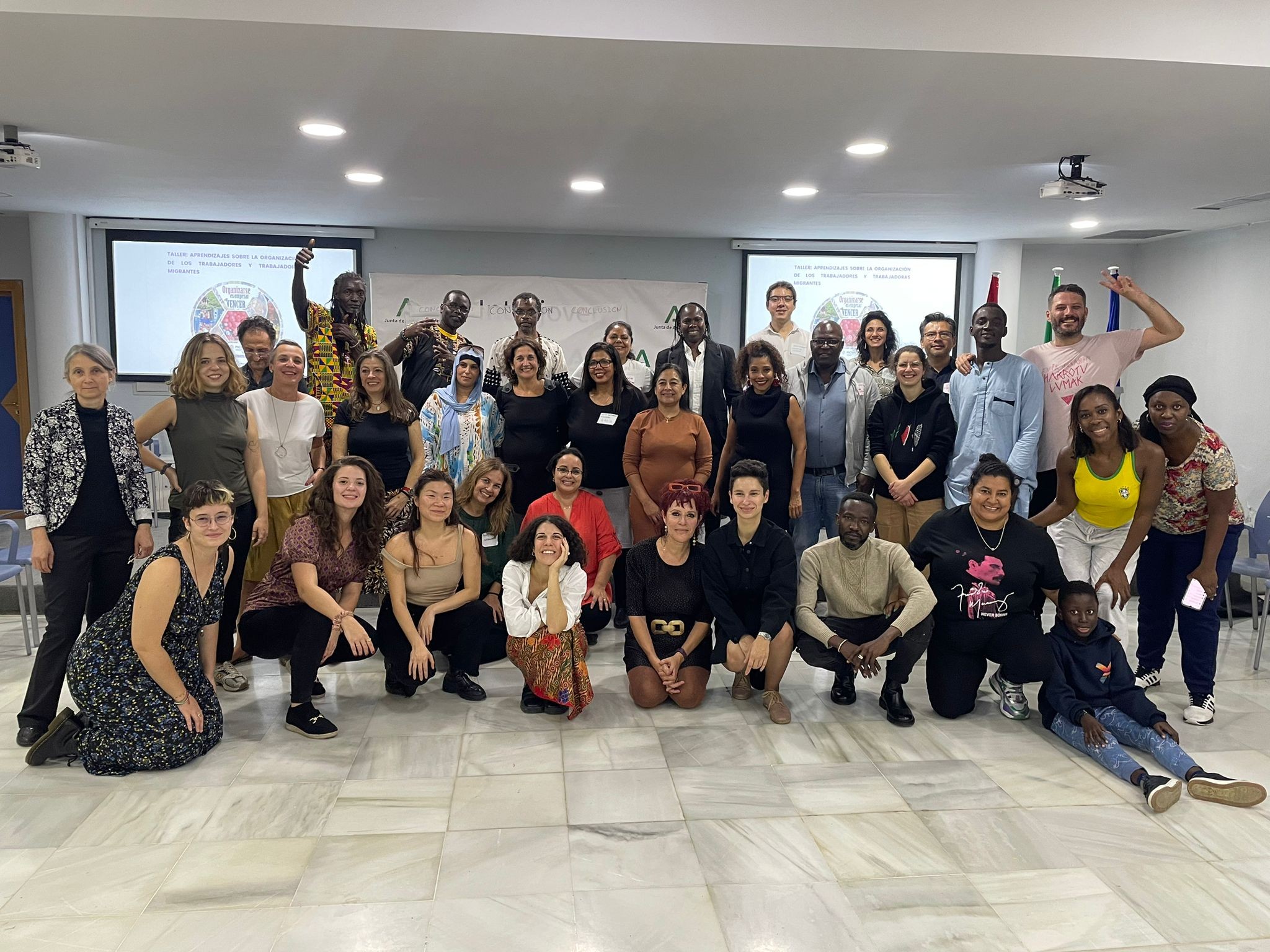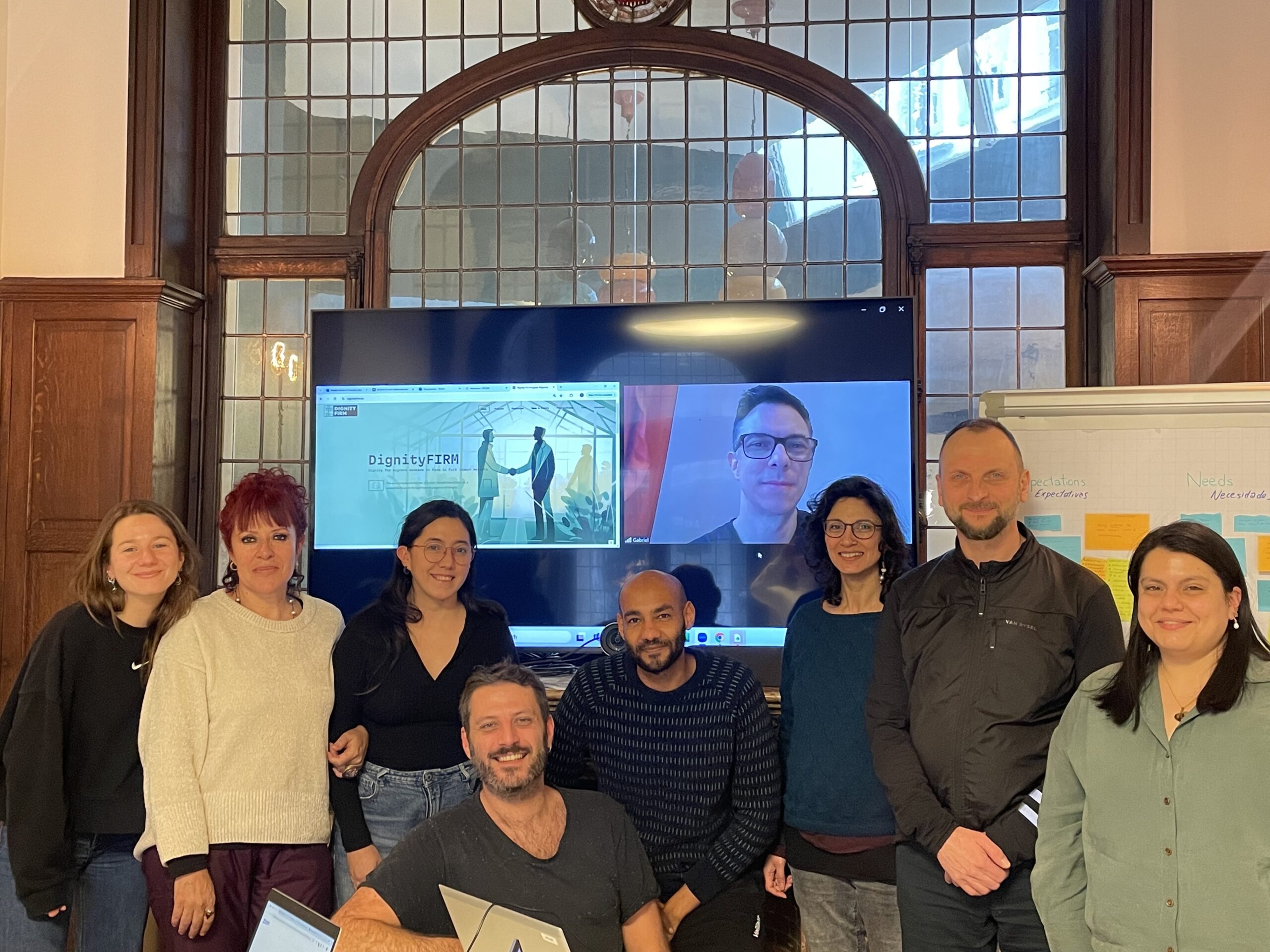
19 Mar Build back better: War does not stop Ukraine from preparing migration laws for EU accession
Build back better: War does not stop Ukraine from preparing migration laws for EU accession
By: Iryna Sushko, Europe without Barriers
Ukrainian authorities are preparing to implement the European Commission’s recommendations on migration. Accordingly, they need to exchange knowledge with their EU partners and align national migration legislation with the EU acquis.
To facilitate this process, the IOM office in Ukraine organized a specialized seminar on the adaptation of Ukrainian legislation to EU legislation in the field of migration and borders, in Kyiv on 14 February 2024. DignityFIRM partner and Ukrainian think tank “Europe without Barriers”, which draws up analytics for authorities working in the field of integrated border management, participated in the event. The seminar encompassed a broad range of topics related to EU enlargement policy as well as an overview of legislation in the EU sphere.
The participants analyzed Ukraine’s EU accession progress and identified priority EU regulations and directives. One of the most important discussions focused on Ukrainian authorities’ approach to irregular migration. We believe this knowledge exchange will also help us to in our research within the DignityFirm project, where we investigate irregularities of migrant labour in farm2fork sectors in Ukraine, and how to overcome these, enhance (migrant) worker agency.
Ukraine’s legislative approach with the EU is guided by the EU-Ukraine Association Agreement, signed in 2014 and effective since 2017.
The monitoring of task implementation in the justice, freedom, and security (JFS) chapter has been repeatedly determined as successful by both Ukraine and the EU. This part of the Association Agreement also includes the issues of migration and borders, as well as human rights and freedom of movement.
After becoming an EU candidate country in June 2022, Ukraine received seven recommendations for meeting the accession negotiations criteria. The European Council gave the green light to the accession talks on December 14, 2023. As a result, the screening of Ukrainian legislation and its gradual alignment with the EU acquis began.
This begs the question of what needs to be done in the field of migration? And which goals should the authorities set out when developing and implementing a new type of migration policy? Also, how can independent experts help in this process?
The main implementation goal of activities featured in Chapter 3 of the EU-Ukraine Association Agreement is to enable the free movement of people while guaranteeing their security. The sub-areas include the following components: Migration (mainly immigration), Asylum, Visa policy, External borders, Judicial cooperation system in civil and commercial matters, Judicial cooperation in criminal matters. According to EU migration law, this chapter has to be amended by the new tasks in the EU Citizenship policy and Schengen horizontal issues (SIS, VIS, ETIAS).
Irregular migration is part of the Migration component and covers several steps aimed at strengthening measures to mainly combat irregular migration. So far, there is little attention for enhancing migrant worker agency, protection mechanisms and, important in the DignityFIRM project, understanding the labour market demand for (precariously employed) migrant workers and improving their working conditions. On the contrary, the measures proposed are focused on sanctions instead of solving underlying issues, a labour demand that will in all likelihood only increase:
- Firstly, relevant Ukrainian authorities must enhance penalties and sanctions against irregular migrants’ employers.
- Secondly, improvements have to be made regarding sham adoptions and marriages, promoting regular migration instead.
- Thirdly, Ukraine should reconsider some approaches to family reunification, border checks, asylum, and immigration.
The New Pact on Asylum will be the next important step in launching a new principle of the EU migration law and policy. However, there is little attention (yet) for legal pathways or regularisations.
During the discussion at the IOM event in February 2024, the “Europe without Barriers” experts told the participants that to implement these steps, the authorities need relevant and updated data about irregular migrants in Ukraine.
We informed the officials about the DignityFirm project and its expected results. We are sure that DigityFIRM will offer useful insights for stakeholders shaping new policies in this area.
Yet, we are also worried that there is – as is the narrative in the EU on irregular migration – mainly attention for irregular migration sanctions. Instead, we hope to contribute to a proper implementation of legal pathways for migrant workers into Ukraine as we will need them to keep going, and build back better, Ukraine Farm2Fork sectors, also giving consideration to migrant workers’ rights in EU-Ukraine trade and agricultural policies.
———————–
War economy & EU Accession
The full-scale invasion of the Russian Federation weakened the Ukrainian economy. In particular, a third of the gross domestic product was lost. And the forced emission in 2022 caused an increase in inflation.
The maintenance of the army has significantly increased, it has destroyed production, as well as labour migration into Ukraine. These are just a few aspects of the biggest economic shock in the history of Ukraine, caused by the war. This affected not only the size of the economy, but also its structure.
* Construction fell the most, quite expectedly (-68%). Among the largest sectors of the economy, the processing industry fell by almost half due to destruction, occupation and active fighting in industrial regions.
* Wholesale and retail trade, together with the agricultural sector, fell by almost a third for the same reasons.
* According to the National Bank of Ukraine, at the end of 2022, the unemployment rate in Ukraine was 21.1%, which is 2.2% higher than the previous year and the highest since 2010.
* More than 4.2 million Ukrainians left and did not return to Ukraine since the beginning of the War.
* The number of immigrants, both regular and irregular, has decreased significantly.
Ukrainian demographers note that Ukraine will need about 300,000 immigrants every year. They also stress that only qualitative changes in the field of labor migration can motivate foreigners to look for work in Ukraine.
At the same time, the European Integration opens a “window of opportunity”. Positive changes that improved the business climate in Ukraine happened after granting Ukraine the status of a candidate for EU accession, abolition of duties and quotas on Ukrainian exports, liberalization of road freight transport (“transport visa-free”) and inclusion of Ukrainian logistics routes in the indicative maps of the Trans-European Transport Network (TEN-T).
Also, on 7 March 2024 MEPs on the International Trade Committee endorsed the extension of trade liberalisation measures to support Ukraine and Moldova in the face of Russia’s war. These measures include a temporary suspension of import duties and quotas on Ukrainian agricultural exports to the EU. A measure that is good for Ukraine, yet contested by Polish farmers.
On the other hand, some 250 Dutch entrepreneurs active in Ukraine, many in the agri-business, are ready to help Ukraine ‘build back better’.
DignityFIRM will be interested to learn about the working relations and conditions of migrant workers in Ukraine in the years to come.
Cover image by Matt Brown, via Flickr (License CC BY 2.0 DEED)
Latest News
- The Sevilla Manifesto: Voices of migrant workers from Sevilla and beyond
- “From Being Studied to Leading Change”. Participatory Action Research as a Transformative Political Tool
- Morocco-EU Relations: What’s at Stake for Farm to Fork Workers? Social Transformations and Food Security
- Examining migration and work precarity: what is the added value (and potential downside) of a public health perspective?
- The UIZ (Université Ibn Zohr) team met the socialist group at the parliament in Morocco


